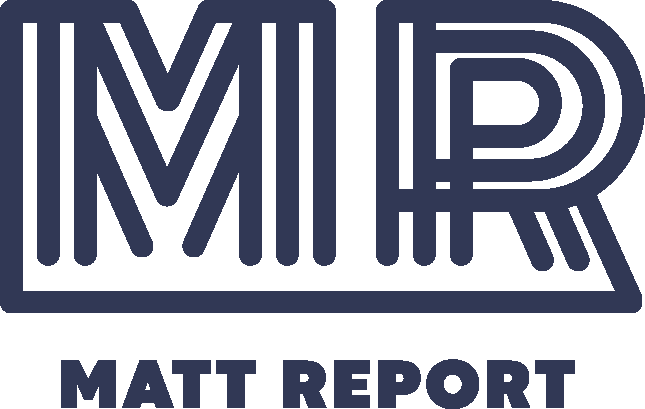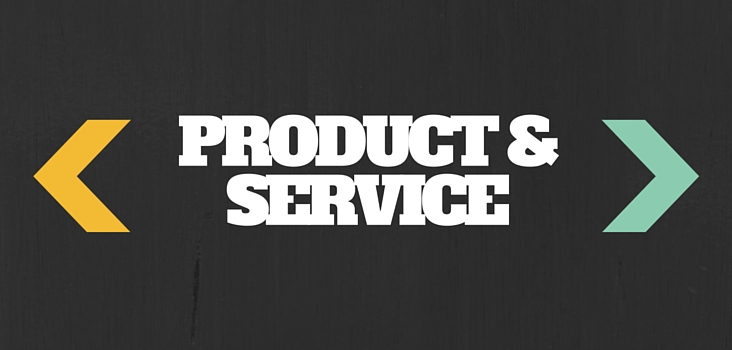I received a batch of great listener questions while co-hosting OfficeHours.fm episode #100 (congrats Carrie!), so I thought it best to expand upon them in a blog post.
A bit of background on where I’m at on my journey as a WordPress entrepreneur, if this is your first time here.
I cofounded and operate a boutique WordPress agency, Slocum Studio. This is our primary revenue generator, servicing clients all around the world, for their various WordPress needs. More recently, we’ve found a good cadence servicing higher education, business-to-business, and funded startups with a focus on customizing WordPress for their content publishing needs. But that doesn’t mean we won’t take on a project that sits outside of these verticals. Every great agency is only a few months away from bankruptcy; therefore, pulling in work to fill the pipeline is a must.
Is your agency a success?
We started out building $500 dollar websites, and now we’re most often building and consulting on $50,000 projects. We started out saying yes to every client that walked through the door, and now we can be more selective. We started out with small traditional marketing websites, and now we’re solving more unique challenges at every turn.
To these points, I’d say we are successful.
Granted, you need to define your own vision for success: be it a healthy freelancing business versus a larger agency model like a WebDevStudios — or somewhere in between. It’s easy to be attracted to five and six-figure contracts, but they also assume an increased ratio of costs, risks, and management.
I can teach you to land more $10,000 clients, but you might not like the overhead that comes with it.
We want to build product too.
[Tweet “Running a services and product business at the same time is difficult.”]
For the last 3 years we’ve split our focus on client work to invest in WordPress themes & plugins. I often forget that not everyone sees product as the Holy Grail, but I know it’s one focus I’ve had since 2006 when I was selling a Drupal theme and getting wrapped up in inspiring Mixergy interviews a short few years later.
Running a services and product business at the same time is difficult.
We can’t stop serving clients, so our product work is a residual of what goes into the work that pays the bills. As to say, we ask the client if we can re-purpose some of the work, short of their branding and any proprietary designs, and roll it into a theme or plugin. We’ve launched ten themes and two plugins over the last few years using this methodology, and it’s served us fairly well.
In Conductor’s context, we enhanced an internal-use plugin we leveraged as a drag-and-drop builder framework (of sorts) being built into client websites. It isn’t a heavy solution or forces a UX takeover (like so many do) and focuses on the separation of design vs. content. Our customers were already using it, we were going to keep investing in it for our own sake, so let’s build a product out of it.
The short story is, there’s a small market that wants this type of solution. Typically, this means developer-focused consultants that want a builder-like solution, without a builder. Recent news is Beaver Builder has generated a million in revenue with their builder — a far cry from where we’re at. But that said, my overall support for across (all of) our digital products are minimal. I’m sure if I were hitting a home run on products, generating more sales, the cost of support would increase too.
Is this product business a success?
Over the last few years my products have done well into the six-figures of make-money-while-I-sleep-passive-income-without-lifting-a-finger revenue — that’s what we all want, right? Great for a small team still wrapped in 70% of day-to-day client work, but laughable revenue for others. Moreover, it’s not like I’m a developer, I have to pay people for every iteration I make. I don’t have development sweat equity to invest.
Maybe I’ll make a $97 course on how I made it this far.
The product space is harder than you think. It’s harder than I think, too. Some product experts will advise against building a product that scratches your own itch, and while that’s solid advice, the variables are time and money. We simply do not have the time (or the capital) to stop the team from client work, to pivot to pure product. Not now, anyway. So by building a set of products that stem from our services pipeline, we’re able to get in some R&D while growing the main revenue stream in parallel.
Sounds like a healthy balance, so where do you lose?
The hardest part is making non-incremental improvements and promoting the product. Amassing a customer base using your product to build websites means a majority of them will want new features to enhance their workflow. More bells, more whistles. Market demand is tough.
We built a builder for people that hate builders. Problem is, so many people do love builders, and we don’t compete with the kitchen sink of features most of them offer. Lacking features leaves you out of a lot of conversations. Conversations drive traffic. So even if you aren’t the product someone chooses, at least you were relevant to their search. Perhaps they will look at your solution in the future or recommend you to a friend.
Many of us snub our nose at feature-packed themes, but they sell like lemonade on a hot summer day. A conundrum for sure.
How do you manage the time?
Let me reiterate, marketing and reinvesting is the hardest part of a split services/product business in this context. It’s a time crunch and a resource crunch. Even when I talk to companies that are booming, they experience the same drag — more revenue doesn’t make you immune.
If you’ve made it this far, you know we’re lucky enough to absorb some R&D time during client work. A typical month might look like this:
- Three weeks sprinting on client work
- One week down-time and investing on product development
- Rinse and repeat for 11 more months.
Actually, as we get into the holiday season, we’re able to invest more time into product development and that’s typically when the bulk of it gets done. Sexy data-driven metrics for growth and A/B testing market fit? Not here. This is down and dirty, roll up the sleeves and get to work mechanics.
Back to the services business, we are also lucky enough to have most of our work on retainer. A majority of accounts pay us monthly to sprint on development enhancements or support, so that keeps us a bit more sane. If we were still chasing new work or milestone payments across a large pipeline — things would be different.
How do you know you’re building for the right audience?
That’s what this all boils down to, right? Have we achieved product market fit? This is the crux of it all. You can sit there for months engineering a wireframe, checking off all the boxes of your MVP model, and fantasizing that the entire market needs your product — but if you don’t hit product market fit — it’s all for not.
To be fair, I think products can mature and eventually find the right fit … but … time.
In fact, I’d argue most products do this — however, we only read about the home runs. We don’t often hear about the products taking ten years to shape, it’s just not a sexy read. People who are concerned with product market fit are:
- Hyper goal oriented
- Have limited runway
It’s great if you’re the former — I applaud you — but that’s not me. For better or for worse, I have a much more open methodology of reaching goals. If I blueprinted everything, the business (and the product) would lose it’s flavor. I also don’t impose much of a runway on products. Maybe this is a major fault, but again, the revenue I bring in from digital sales still supplements the services business and that’s my litmus test to keep it going.
How do you find success in juggling so many offerings?
Try a lot. Fail a lot.
A great example is Amazon. They killed their Fire Phone not two years into it — but their business is crushing it with another upstart, Echo. Laser focused, goal oriented, can pivot on a dime. But that’s Amazon, and I hate when people compare new-age boutique digital business builders (you and I) to massive billion dollar tech companies. We don’t have the same resources or insights — just because we’re both doing business online — doesn’t mean we’re the same.
[Tweet “Try a lot. Fail a lot.”]
My data-driven approach to finding the right product?
- Identify a problem — in my world, from client work.
- Identify if we can build an MVP to address it — in my world, a small plugin.
- Understand if we can scale it — in my world, compare how our clients would use it versus how our product customers would use it. (data-ish!)
A real world example on product testing: One good thing about getting busy with client work is, we’ll often build a feature within a product, lose time to test it — come back to it a month later — and we hate it. Sometimes we love it. Has haphazard product testing been coined yet? Throw it off the cliff and see if it flies. Proceed with caution.
Your mindset matters most.
I’m no different than Cory Miller or Rebecca Gill — I’m just up there still swinging the bat at my chance to hit the home run.
- I have the same abilities.
- I have the same connections.
- I have the same problems.
Perhaps they’ve been swinging the bat longer than I have (and they have, they’re older!), or perhaps they got the perfect pitch to swing at — regardless — my mindset remains positive.
I never blame myself, my team, or even my products — I just realize that this is the game. One does not simply walk up to bat and knock it out of the park on the first try. This stuff takes time, and even when you think it shouldn’t — it does.
If you’re doing your best now, it will pay off in the future, even if you’re not seeing immediate results. The lessons you’re learning from failure, shape healthier decisions you make in the future. If you can manage constant change, you’re perfect for this.
It’s only when you give up, will you face certain failure.
Watch OfficeHours.fm Episode #100
p.s. want early-bird access to my next project? Sign up for my new podcast at pluggedinradio.com!


Leave a Reply